#New Mexico and Mesa Verde National Park
Explore tagged Tumblr posts
Video
Chetro Ketl and a Setting in Chaco Canyon (Chaco Culture National Historical Park) by Mark Stevens Via Flickr: A setting looking to the southwest while taking in views and walking around the ruins present in the Chetro Ketl area of Chaco Culture National Historical Park.
#Ancestral Puebloans#Azimuth 135#Blocks#Blue Skies#Blue Skies with Clouds#Chaco Culture National Historical Park#Chaco Interior Wall#Chaco-San Juan Basin#Chacoan Culture#Chetro Ketl#Cliff#Cliff Face#Cliff Wall#Cliffs#Colorado Plateau#Day 2#Desert Landscape#Desert Mountain Landscape#Desert Plant Life#DxO PhotoLab 7 Edited#Intermountain West#Kiva#Landscape#Landscape - Scenery#Log and Stone Construction#Looking SW#Mesa#Nature#New Mexico and Mesa Verde National Park#Nikon D850
10 notes
·
View notes
Text
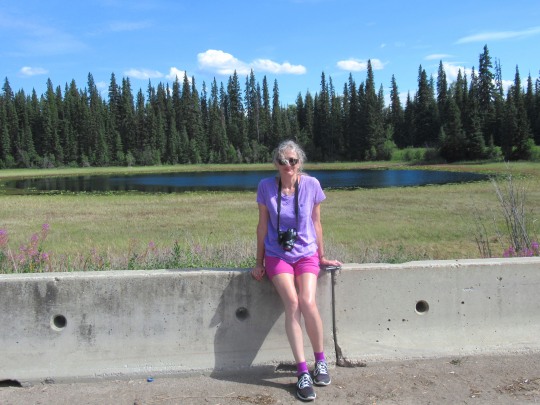
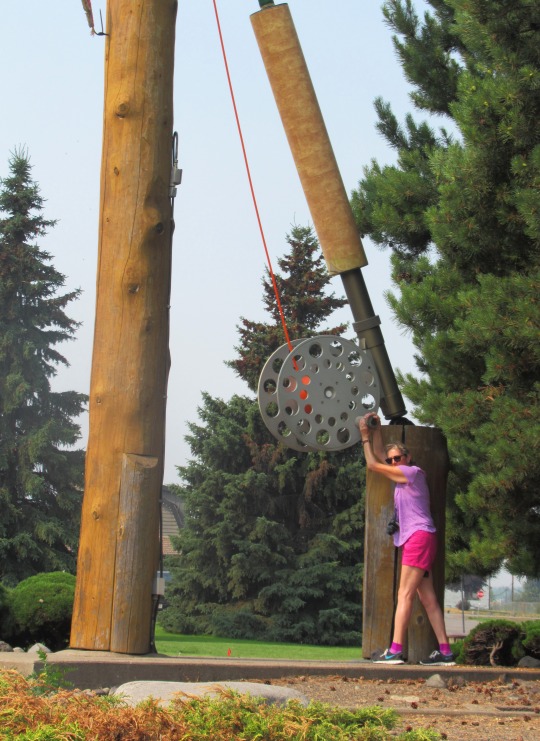


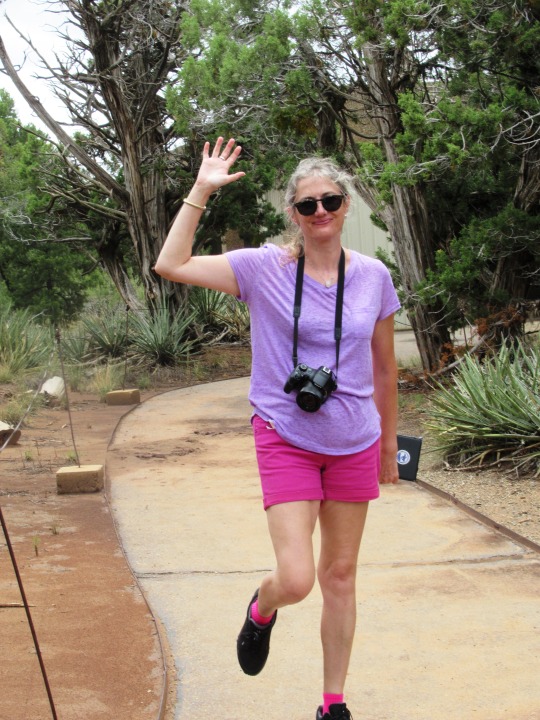

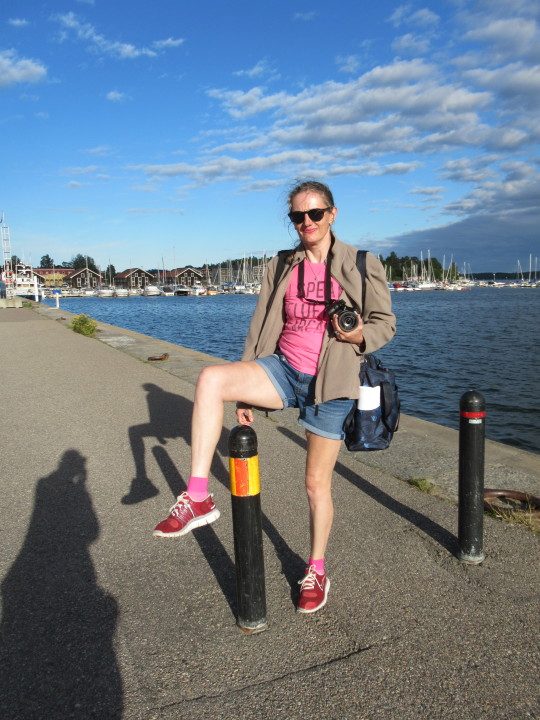
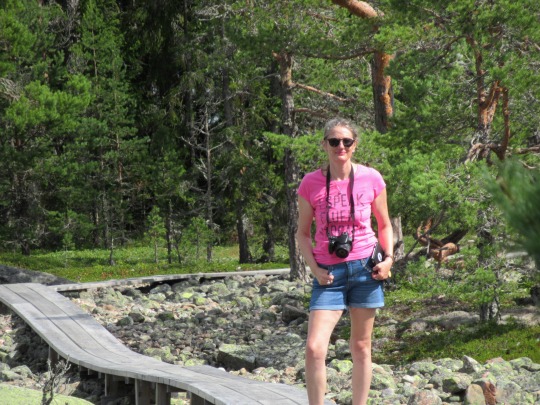


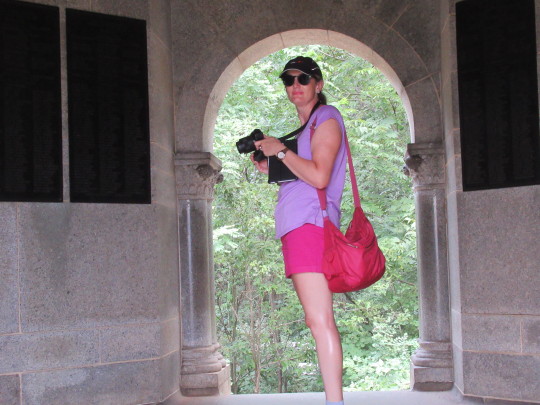
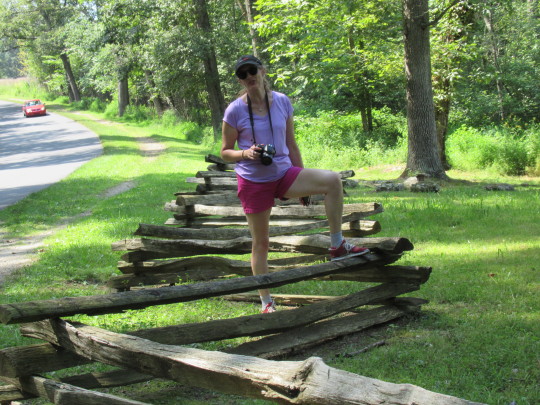
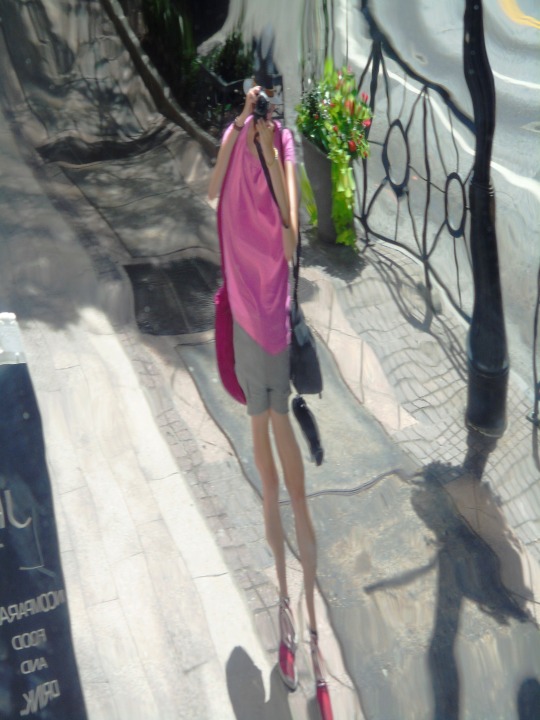

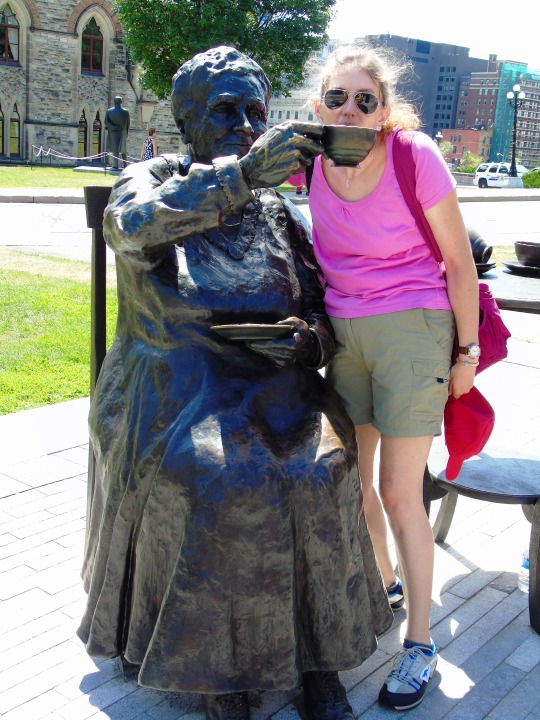


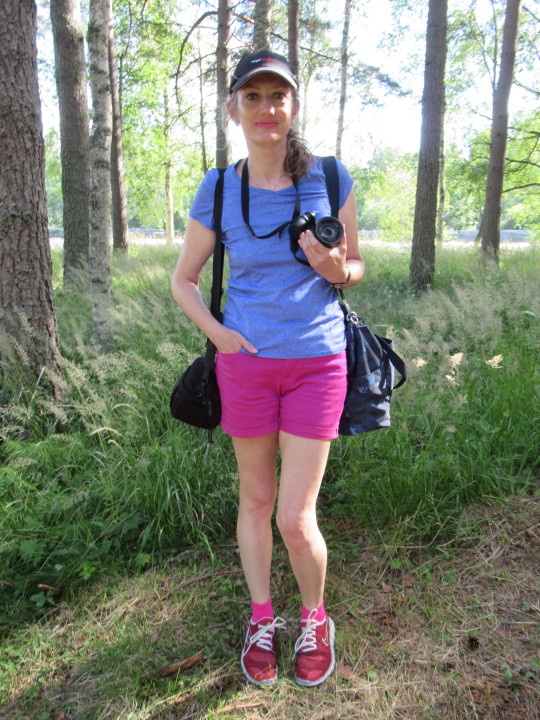
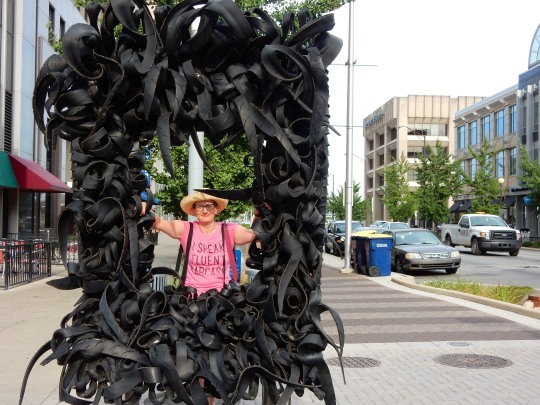
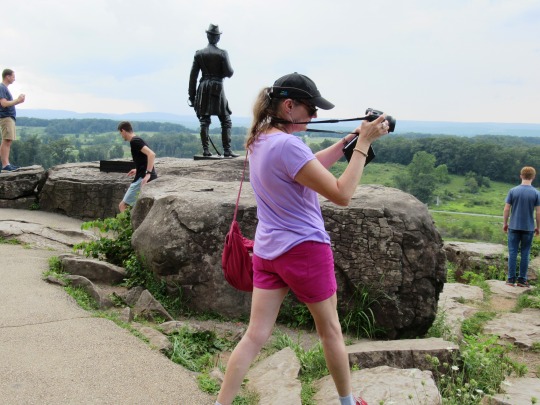
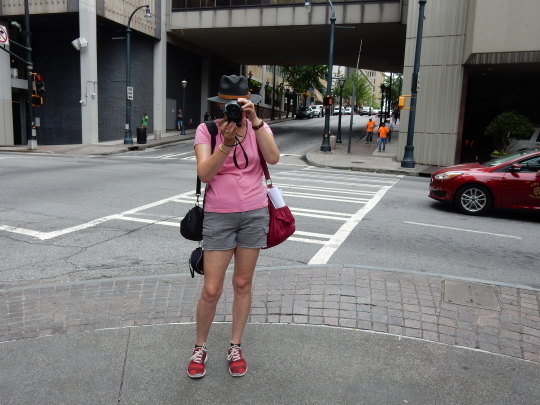


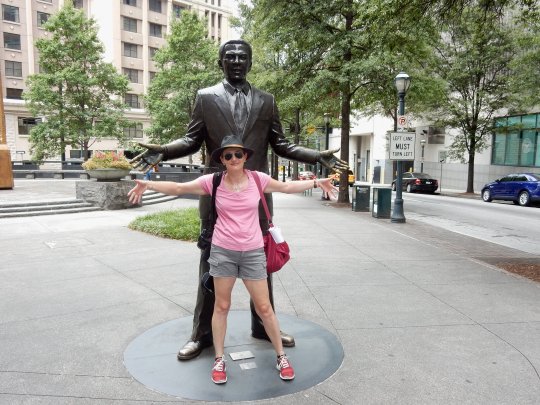
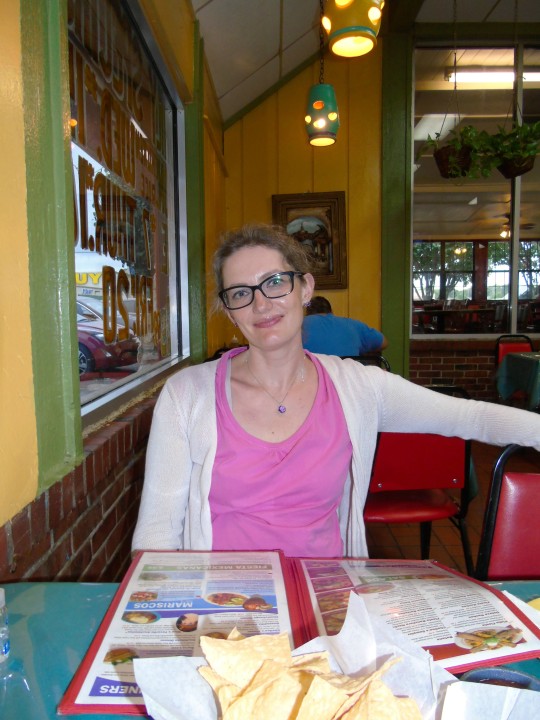



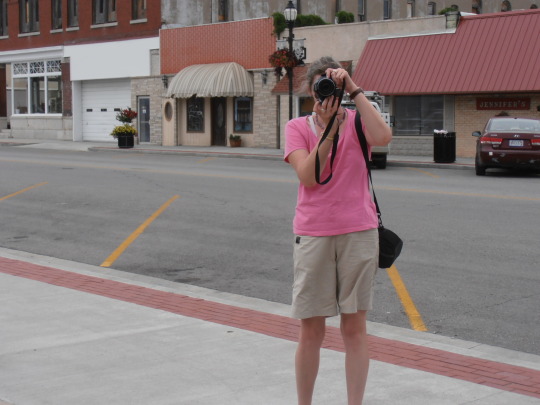

National Pink Day
Bullying is a growing problem in the world today and, every year, people hear of more and more incidents coming up regarding bullying in schools everywhere. And, although it is certainly a problem within schools, bullying doesn’t stop there. It extends to the world outside of school and even into the virtual world of the internet, where young people have created a bit of a world of their own.
Bullying is unpredictable and it doesn’t tend to follow any kind of rhyme or reason. It is merely the exertion of power over those who are weaker or who stand out as unusual. National Pink Day is a day dedicated to beating the bullies and breaking the cycle that creates and perpetuates this damaging behavior inside and outside of schools.
History of National Pink Day
National Pink Day (also sometimes called Pink Shirt Day) was established in 2007 in Nova Scotia, Canada. It happened after a pair of students, David Shepherd and Travis Price, saw one of their fellow students at Central Kings Rural High School being bullied for no other reason than that student was wearing a pink shirt on the first day of school. Because of the association of pink with feminine things, this 9th grade boy was harassed for choosing to wear the color. But his two classmates weren’t going to let the bullies win.
In a stroke of brilliance, these two got together and decided to show support for the student and take a stand against bullying by getting everyone at their school to wear a pink shirt the next day. In fact, the two boys were so committed that they went to a discount store and bought a bunch of pink shirts to pass out for anyone who didn’t already have one. Pink Shirt Day was created to stomp out all bullying and spread understanding, and it’s a concept spreading throughout the world.
What started in a small corner of Canada has become something of a world event. The day has also been associated with Anti-Bullying day, another day when the idea is to stand up for others and wear pink. While the United Nations has made a declaration that this should happen on May 4, people in many countries still celebrate in February. But, that just means that there can be two different opportunities to make a difference and stand against bullying!
National Pink Day Timeline
Early 20th Century Pink is used for baby boys more than girls
While in the future, boys might get teased for wearing pink, during the 1900s-1930s, it is considered completely appropriate for a baby boy to wear pink and for a girl to wear blue. It isn’t until later in the century that this will flip.
2007 First National Pink Day (Pink Shirt Day) begins
Two students take a stand against bullying against a student in 9th grade in Nova Scotia, Canada who was teased for wearing a pink shirt on the first day of school. They respond by buying dozens of pink shirts and handing them out for everyone to wear the next day.
2009 National Pink Day is celebrated in New Zealand
As word gets out, National Pink Day begins gaining traction and makes its way to the southern hemisphere. Other countries all over the world quickly follow suit.
2012 United Nations declares official Anti-Bullying Day
Although the date isn’t the same as the original Pink Day, the heart of the matter certainly aligns. Instead of February, the UN declares May 4th as an International Anti-Bullying Day.
2020 National Pink Day passes the $2.5 million mark in donations
Keeping in line with their origins of anti-bullying efforts, National Pink Day started raising money in 2008. It continues to support the efforts that have helped more than 59,000 youth and children, and will keep on going!
How to Celebrate National Pink Day
Getting on board and connected on this day is super easy and it all starts with wearing pink! Here are some other ideas for ways to celebrate this important day:
Wear Something Pink
Start the day by picking out a favorite pink garment and putting it on, especially for those who are male-bodied persons. Whether it’s just a pink t-shirt, a pink polo shirt, or an entire zoot suit made completely in pink–wear it! Get out there and take a stand against bigotry wherever it is found by making sure the offenders know that their calls will not go unanswered.
Teach Kids About Bullying
The more educated and informed kids (and parents!) are about bullying, the better equipped they will be to respond and to stand up, whether for themselves or someone else who is being picked on. Several organizations have been created that provide resources to help enlighten and educate families about bullying. Some of these organization include:
STOMP Out Bullying. Standing up against hate, racism and discrimination, this influential organziation has a help line for kids and teens, resources for parents and kids, options for donating, and ways to buy wearable merchandise to support the cause. stompoutbullying.org
National Association of People Against Bullying (NAPAB). This group provides personal advocacy and support for those who have experienced problems with bullying. They also offer education for students, parents and educators, as well as an anti-bullying club that meets across the nation (called Cool 2B Kind). www.napab.org
Kind Campaign. Bringing awareness and healing for those affected by girl-against-girl bullying, as well as working to stop bullying. It’s a global movement that has made a documentary as well as offering educational curriculums and in-school assemblies. Girls can also buy merch online and start their own Kind Club. kindcampaign.com
Stop Bullying. This is a combined effort between US government organizations including the education department, justice department and health and human services department. They offer resources and information as well as tools and guides for identification and prevention. They also offer an online bullying prevention training course. stopbullying.gov
Help Out in a Bullying Situation
This isn’t just for National Pink Day, but is a life lesson for every day. Those who happen to see or witness someone getting bullied or harassed should be sure to walk up to them and help them out. Don’t let them believe that they are alone in the world. National Pink Day is a day to stand up against the injustice of harassment and bullying, especially against minorities and those of the LGBTQ community.
Those who have ever been bullied in the past know how important it can be to have someone stand up and try to offer support. On National Pink Day, it’s possible to stand up for everyone with a simple wardrobe choice.
Spread the Word About National Pink Day
Since National Pink Day is still a fairly recent occurrence, and it affects kids who might not know about it yet, this is a great day to tell everyone about these anti-bullying efforts. Tell friends about National Pink Day in advance, and then make plans for what to wear and how to honor the day. Take a selfie or a photo of friends wearing pink and share it on various social media platforms to get the word out to everyone.
Throw a National Pink Day Party
School teachers and parents can show their support by allowing students to have a party in celebration of National Pink Day. This is an ideal day to get everyone involved in working toward eliminating the struggles faced by so many kids today. Have everyone wear a pink shirt in support of the day, decorate the party room in pink balloons and streamers, and even serve pink colored foods.
A great activity would be to watch a documentary or video put out by some of the anti-bullying resources listed above. Or have the kids create some unique artwork by using art supplies that are exclusively pink, then put them on display in a cool anti-bullying art show that everyone can enjoy.
Source
#Mesa Verde National Park#usually I don't wear pink#it's too girly for me#USA#Four Corners Monument#Arizona#Utah#New Mexico#Colorado#travel#Albufeira#Portugal#Hudiksvall#Sweden#landscape#cityscape#Pennsylvania#Gettysburg National Military Park#Indianapolis#Indiana#Indy#New York City#Monument Valley Navajo Tribal Park#National Pink Day#28 February 2024#NationalPinkDay#PinkShirtDay#original photography#Pink Shirt Day#vacation
2 notes
·
View notes
Note
Do you have any locations that you really want to visit to look for fossils? A fossil bucket list, if you will
😳 all over the PNW (chuckanut formation especially, i think that stuff is neat), but also areas of colorado and wyoming for florissant and green river formation stuff.. love me some plants
i’ve actually been to the mazon creek fm!! i got to collect a few concretions and crack them open, was very fun !! no tully monster though 😔 but i’d like more inverts from there…
i’d like to comb the oregon coast again, too!! i went earlier this year and found a tiny piece of bone that i promptly lost. (also many shells from the astoria formation) and then someone that went a week later found a DESMOSTYLIAN TOOTH ATTACHED TO JAW BONE which is literally a dream find for me 😭😭😭
i’d also like to visit the menefee formation of new mexico! it’s been a focus of some research for a while now and i’ve met some people working on it (mesa verde national park has a lot of fossils from that fm, very neat place and if u ask they have info) and there’s more cool stuff to come !!!
lastly… probably the chinle of AZ/NM or some triassic dockum group stuff in texas. i’d looooove to find some of that iconic rainbow petrified wood!
i don’t know enough about geology elsewhere to really say much 🫣 EXCEPT i wanna visit the gobi desert of mongolia bc the fossils there... exquisite
#the east coast doesn’t have much that interests me#besides maybe the gray fossil site but i’m not that interested in later cenozoic stuff#ooooh also devils graveyard fm of west texas#talk#ask#paleontology
44 notes
·
View notes
Text
1. Acadia National Park, Maine
2. American Samoa National Park, American Samoa
3. Arches National Park, Utah
4. Badlands National Park, South Dakota
5. Big Bend National Park, Texas
6. Biscayne National Park, Florida
7. Black Canyon of the Gunnison National Park, Colorado
8. Bryce Canyon National Park, Utah
9. Canyonlands National Park, Utah
10. Capitol Reef National Park, Utah
11. Carlsbad Caverns National Park, New Mexico
12. Channel Islands National Park, California
13. Congaree National Park, South Carolina
14. Crater Lake National Park, Oregon
15. Cuyahoga Valley National Park, Ohio
16. Death Valley National Park, California & Nevada
17. Denali National Park, Alaska
18. Dry Tortugas National Park, Florida
19. Everglades National Park, Florida
20. Gates of the Arctic National Park, Alaska
21. Gateway Arch National Park, Missouri
22. Glacier Bay National Park, Alaska
23. Glacier National Park, Montana
24. Grand Canyon National Park, Arizona
25. Grand Teton National Park, Wyoming
26. Great Basin National Park, Nevada
27. Great Sand Dunes National Park, Colorado
28. Great Smoky Mountains National Park, Tennessee & North Carolina
29. Guadalupe Mountains National Park, Texas
30. Haleakalā National Park, Hawaii
31. Hawai’i Volcanoes National Park, Hawaii
32. Hot Springs National Park, Arkansas
33. Indiana Dunes National Park, Indiana
34. Isle Royale National Park, Michigan
35. Joshua Tree National Park, California
36. Katmai National Park, Alaska
37. Kenai Fjords National Park, Alaska
38. Kings Canyon National Park, California
39. Kobuk Valley National Park, Alaska
40. Lake Clark National Park, Alaska
41. Lassen Volcanic National Park, California
42. Mammoth Cave National Park, Kentucky
43. Mesa Verde National Park, Colorado
44. Mount Rainier National Park, Washington
45. New River Gorge National Park and Preserve, West Virginia
46. North Cascades National Park, Washington
47. Olympic National Park, Washington
48. Petrified Forest National Park, Arizona
49. Pinnacles National Park, California
50. Redwood National Park, California
51. Rocky Mountain National Park, Colorado
52. Saguaro National Park, Arizona
53. Sequoia National Park, California
54. Shenandoah National Park, Virginia
55. Theodore Roosevelt National Park, North Dakota
56. Virgin Islands National Park, United States Virgin Islands
57. Voyageurs National Park, Minnesota
58. White Sands National Park, New Mexico
59. Wind Cave National Park, South Dakota
60. Wrangell—St. Elias National Park, Alaska
61. Yellowstone National Park, Wyoming, Montana & Idaho
62. Yosemite National Park, California
63. Zion National Park, Utah
9 notes
·
View notes
Text
Day 12, Mon June 8: Durango to Mancos to Cortez to Rico to Telluride and back, 366 km
My hotel serves breakfast, so I get to talk to some of the locals. As a result, I switch Telluride from a sidebar on tomorrow's ride to a full day trip today. Right choice. It turned out to be a spectacular day.
Durango sits at 6,522', pop 19,223 and is surrounded by massive mountains (San Juan range of the Rocky Mtns), unbeatable skiing and an historic small gauge railway, a vestige of its silver mining days.
I head out on Hwy 180 to Mancos (7,020', pop 1,221), the gateway to Mesa Verde National Park, home to 4,700 archeological sites and 600 cliff dwellings.
I pass through to Cortez (6,191', pop 8,855) located at the corners of Arizona, Colorado, New Mexico, and Utah.
From.there, I turn north on Hwy 145 to Rico (8,825', pop 347), obviously now a mere shadow from its silver mining heyday. With the elevation climb comes lower temperatures and rain. I find a sheltered awning and scramble beneath to put on my warm clothing and rain gear. As all bikers will attest, there is no such thing as bad weather, just bad clothing choices. Well, almost, as I pull out of Rico, the hail starts. It's not good on a sports bike. I consider turning around, but it drops off, only to start hailing again 15 minutes later as I climb higher towards Telluride. I white knuckle onwards, too close now to turn back.
It turns out to be the right decision. I explore my way through Telluride, then ride over to Mountain Village to catch the gondola ride over the top of the mountain back to Telluride. As it starts raining, I eat lunch on the gondola, enjoy the scenery, and look at the black clouds rolling in. Rather than linger when I get back, I head straight back, kit up, and get on the bike. Within minutes, the hail starts up again. It lasts about 20 minutes, bouncing off my helmet and smashing my knuckles, but finally, I make it back to the lower elevation of Rico where it turns to just plain rain.
Other than the stunning scenery and the winding roads, the trip back after that is comparatively peaceful. I celebrate by stopping in to explore and have dinner in Durango.
Someone was smiling down on me today. A spectacular ride, awesome scenery, a safe return, and $3.00 beer night in Durango. Life is good.

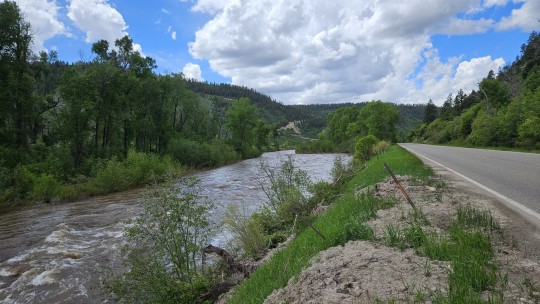

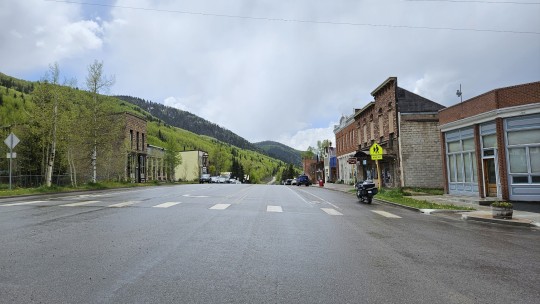





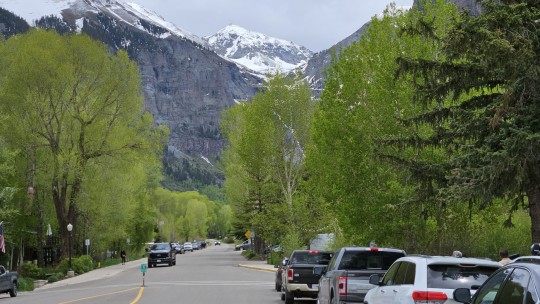
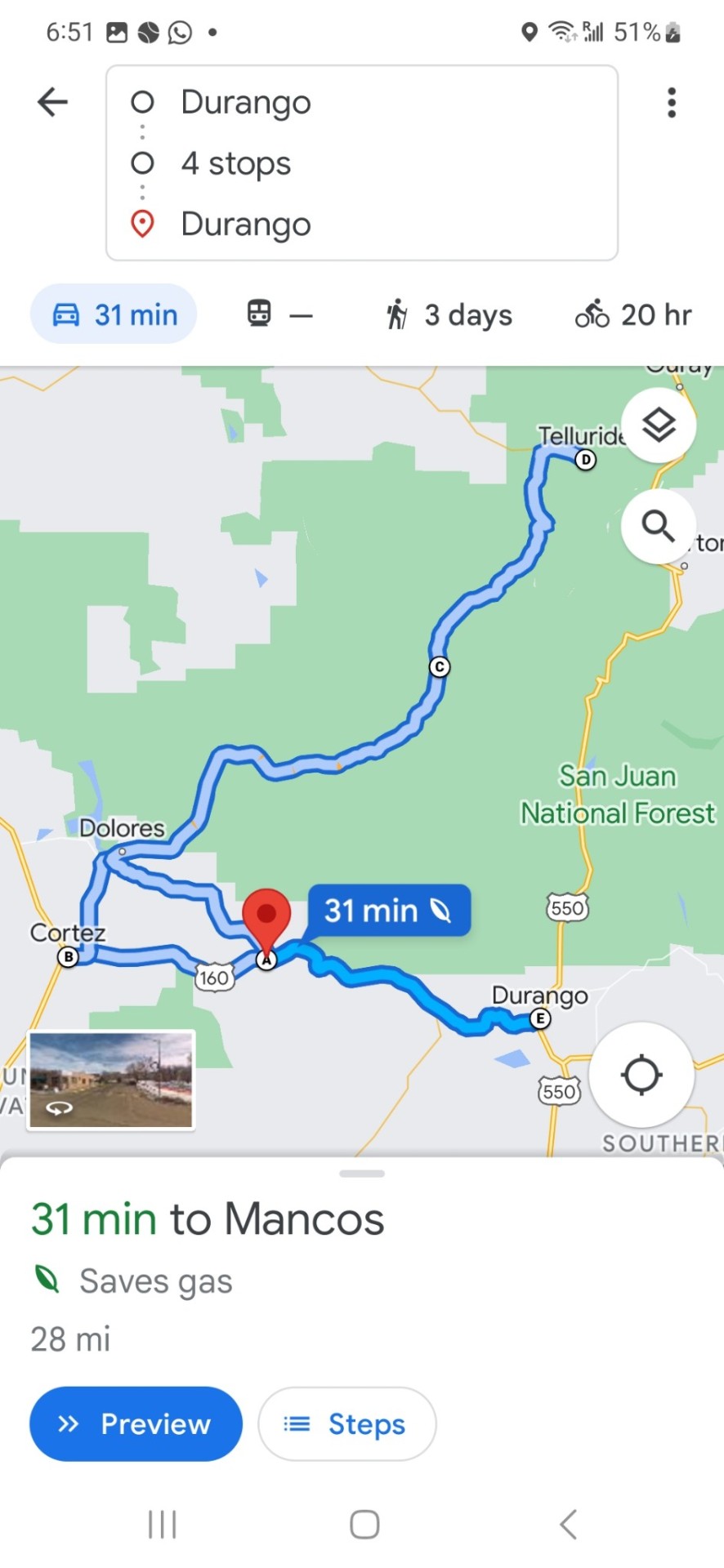
2 notes
·
View notes
Text

Cliff Palace, Mesa Verde NM
The Ancestral Puebloans, also known as the Anasazi, were an ancient Native American culture that spanned the present-day Four Corners region of the United States, comprising southeastern Utah, northeastern Arizona, northwestern New Mexico, and southwestern Colorado.[1] They are believed to have developed, at least in part, from the Oshara tradition, which developed from the Picosa culture. The people and their archaeological culture are often referred to as Anasazi, meaning "ancient enemies", as they were called by Navajo. Contemporary Puebloans object to the use of this term, with some viewing it as derogatory.[2][3]
The Ancestral Puebloans lived in a range of structures that included small family pit houses, larger structures to house clans, grand pueblos, and cliff-sited dwellings for defense. They had a complex network linking hundreds of communities and population centers across the Colorado Plateau. They held a distinct knowledge of celestial sciences that found form in their architecture. The kiva, a congregational space that was used mostly for ceremonies, was an integral part of the community structure.
Archaeologists continue to debate when this distinct culture emerged. The current agreement, based on terminology defined by the Pecos Classification, suggests their emergence around the 12th century BC, during the archaeologically designated Early Basketmaker II Era. Beginning with the earliest explorations and excavations, researchers identified Ancestral Puebloans as the forerunners of contemporary Pueblo peoples.[1][3] Three UNESCO World Heritage Sites located in the United States are credited to the Pueblos: Mesa Verde National Park, Chaco Culture National Historical Park and Taos Pueblo.
2 notes
·
View notes
Text
Geometry in Ages Past
Geometry in Ages Past
When I saw that this week’s Lens-Artist’s Photography Challenge was geometry, I was at a bit of a loss at first. After all, I do primarily nature photography and although Mother Nature loves a circle or a sphere, she isn’t much into squares and cubes. Trapezoids, circles and ovals Then I happened to notice a similarity in the rock art of many of the ancestral peoples of the desert southwest.…
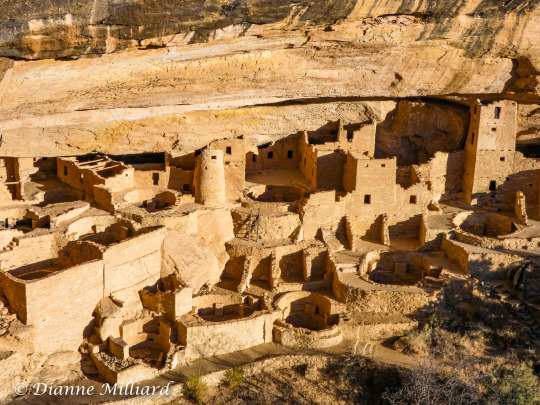
View On WordPress
#Ancestral Puebloan culture#Antiquities Act#Bear&039;s Ears National Monument#cliff dwellings#Colorado#Desert#Desert Southwest#destinations#Dinosaur National Monument#Fremont culture#Gila Cliff Dwelling#Lens Artists Photo Challenge#Lens-Artists#Mesa Verde#Mogollon culture#National Monuments#National Parks#New Mexico#Petrified Forest#petroglyphs#pictographs#pothunters#rock art#ruins#Three Rivers Petroglyphs#Utah#vandalism
1 note
·
View note
Text
#op has been to most of the 'biggies' already and is interested in visiting one of these specifically :)#polls#national park#travel#nature#us national parks
14 notes
·
View notes
Photo
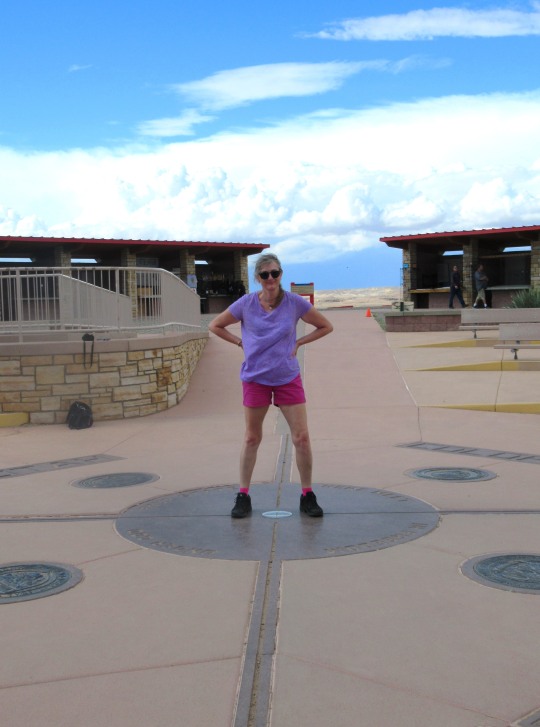
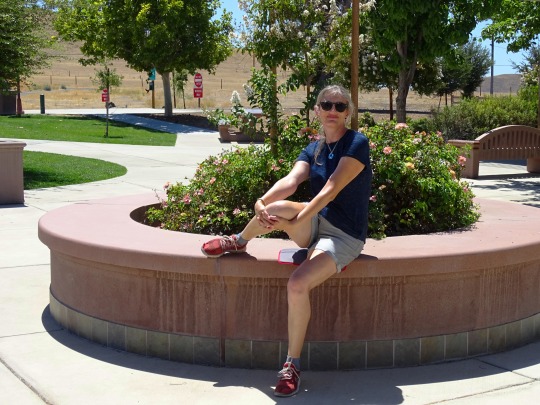

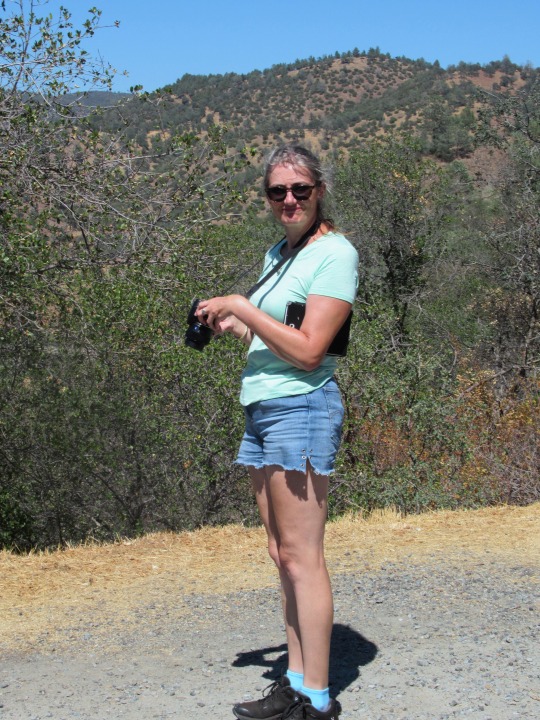

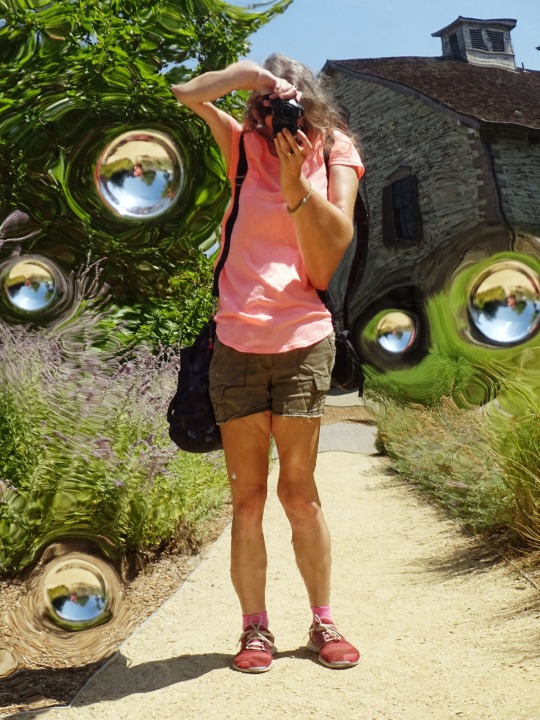

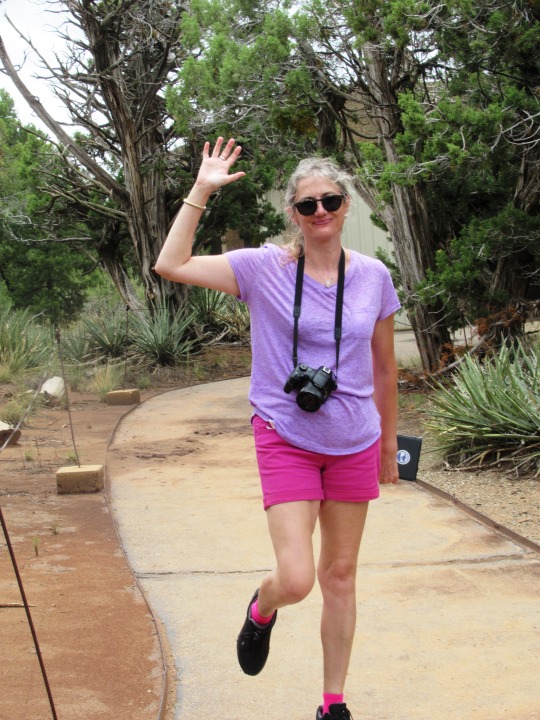
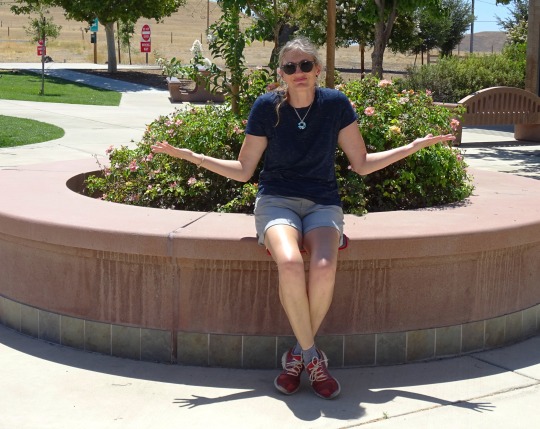

National Shoe The World Day
National Shoe The World Day is observed annually on March 15th.
Each day over 500 million children, teens and adults around the world do not have a pair of shoes to wear, and despite the terrain and the climate, they have to walk barefoot everywhere. It is a struggle each day that we cannot begin to imagine. Having to live a daily life without protection on your feet can lead to a lifetime of problems including pain, injury, cuts, sores, infections, parasites, banning from schools and other places and the list goes on.
It is sad to say that we will call this lucky, but there are a few that are fortunate enough to have one pair of shoes even though they are much too big for them. This way, their shoes will last for many years, as they grow, and they are only allowed to be worn for very special occasions. In other cases, they may have one pair of shoes that are too small and tight for them (they will make them work) but to have a pair at all is a luxury.
HOW TO OBSERVE
Visit Soles4Souls to donate shoes. National Shoe The World Day is a day created to bring awareness, to everyone across the nation, of the incredible need to help those people around the world that do not have shoes to wear and then to take action in helping.
HISTORY
National Shoe The World Day was inspired by Donald Zsemonadi and the United Indigenous People in Fontana, California in March of 2014.
Source
#Las Vegas#Paradise#Pacific Ocean#California#Nevada#Utah#Colorado#Alamosa#Mesa Verde National Park#St. Helena#Napa Valley#Four Corners Monument#New Mexico#Arizona#landscape#sneakers#hiking shoes#architecture#countryside#tourist attraction#landmark#USA#summer 2022#original photography#National Shoe The World Day#15 March#NationalShoeTheWorldDay
1 note
·
View note
Text
FLAGSTAFF, Ariz. (AP) — Federal penalties have increased under a newly signed law intended to protect the cultural patrimony of Native American tribes, immediately making some crimes a felony and doubling the prison time for anyone convicted of multiple offenses.
President Joe Biden signed the Safeguard Tribal Objects of Patrimony Act on Dec. 21, a bill that had been introduced since 2016. Along with stiffer penalties, it prohibits the export of sacred Native American items from the U.S. and creates a certification process to distinguish art from sacred items.
The effort largely was inspired by pueblo tribes in New Mexico and Arizona who repeatedly saw sacred objects up for auction in France. Tribal leaders issued passionate pleas for the return of the items but were met with resistance and the reality that the U.S. had no mechanism to prevent the items from leaving the country.
“The STOP Act is really born out of that problem and hearing it over and over,” said attorney Katie Klass, who represents Acoma Pueblo on the matter and is a citizen of the Wyandotte Nation of Oklahoma. “It's really designed to link existing domestic laws that protect tribal cultural heritage with an existing international mechanism.”
The law creates an export certification system that would help clarify whether items were created as art and provides a path for the voluntary return of items that are part of a tribe's cultural heritage. Federal agencies would work with Native Americans, Alaska Natives and Native Hawaiians to outline what items should not leave the U.S. and to seek items back.
Information provided by tribes about those items would be shielded from public records laws.
While dealers and collectors often see the items as art to be displayed and preserved, tribes view the objects as living beings held in community, said Brian Vallo, a consultant on repatriation.
“These items remain sacred, they will never lose their significance,” said Vallo, a former governor of Acoma Pueblo in New Mexico. “They will never lose their power and place as a cultural item. And it is for this reason that we are so concerned."
Tribes have seen some wins over the years:
— In 2019, Finland agreed to return ancestral remains of Native American tribes that once called the cliffs of Mesa Verde National Park in southern Colorado home. The remains and artifacts were unearthed by a Swedish researcher in 1891 and held in the collection of the national Museum of Finland.
— That same year, a ceremonial shield that vanished from Acoma Pueblo in the 1970s was returned to the tribe after a nearly four-year campaign involving U.S. senators, diplomats and prosecutors. The circular, colorful shield featuring the face of a Kachina, or ancestral spirit, had been held at a Paris auction house.
— In 2014, the Navajo Nation sent its vice president to Paris to bid on items believed to be used in wintertime healing ceremonies after diplomacy and a plea to return the items failed. The tribe secured several items, spending $9,000.
—In 2013, the Annenberg Foundation quietly bought nearly two dozen ceremonial items at an auction in Paris and later returned them to the Hopi, the San Carlos Apache and the White Mountain Apache tribes in Arizona. The tribes said the items invoke the spirit of their ancestors and were taken in the late 19th and 20th centuries.
The STOP Act ties in with the Native American Graves Protection and Repatriation Act that requires museums and universities that receive federal funds to disclose Native American items in their possession, inventory them, and notify and transfer those items to affiliated tribes and Native Hawaiians or descendants.
The Interior Department has proposed a number of changes to strengthen NAGPRA and is taking public comment on them until mid-January.
The STOP Act increases penalties for illegally trafficking Native American human remains from one year to a year and a day, thus making it a felony on the first offense. Trafficking cultural items as outlined in NAGPRA remains a misdemeanor on the first offense. Penalties for subsequent offenses for both increase from five years to 10 years.
New Mexico U.S. Rep. Teresa Leger Fernandez, who introduced the House bill, said time will tell whether the penalties are adequate.
[...]
5 notes
·
View notes
Photo
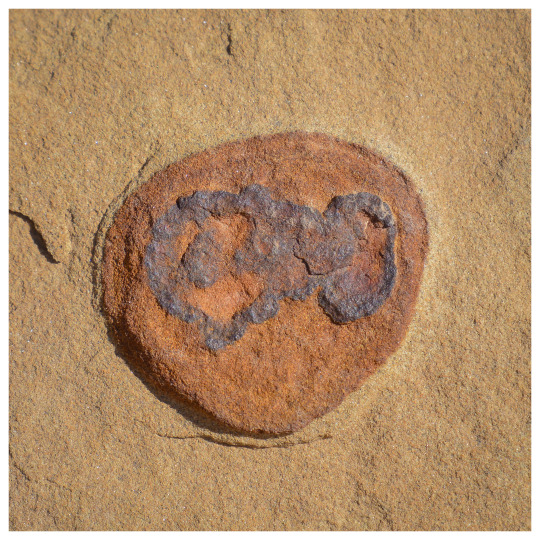

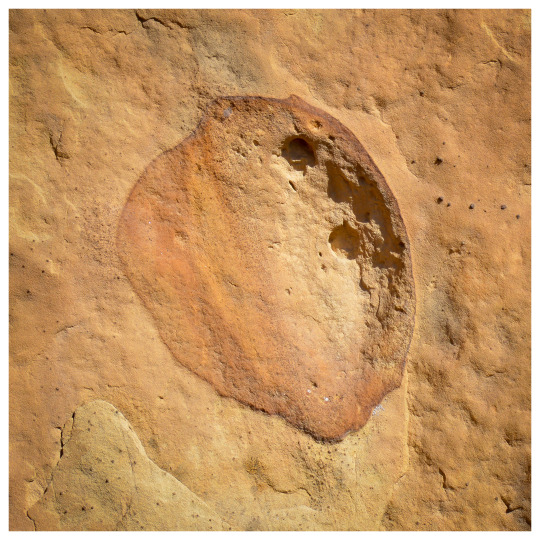



Strange inclusions.
At the Chaco Culture National Historical Park, New Mexico. These sandstones are from ancient marine deposits constituting the Cliff House Sandstone. The formation is found throughout the San Juan Basin, and is the same sandstone exposed at the Mesa Verde cliff dwellings, for which the stratum is named.
#photographers on tumblr#geology#sandstone#abstraction in nature#Chaco Culture National HIstorical Park#UNESCO World Heritage Site#Navajo Nation#New Mexico#Cliff House Sandstone#wish I had taken geology in college
183 notes
·
View notes
Text
Day 5
Finally have enough internet for a real update! Getting out of Texas never felt so sweet for a few reasons; One, it’s closer to temperatures that I can handle (Did I mention that hEDS/HSD comes with heat intolerance?), Two, I’ve already had to do a little camper repair. The high winds between Lake Colorado City State Park and Lubbock were just too much, and only after I pulled up to Prairie Dog Town (Yes, I go to every Prairie Dog town I find near me on the map! You should too), did I notice almost half the fiberglass on one side of the camper had been ripped away. Oh boy!
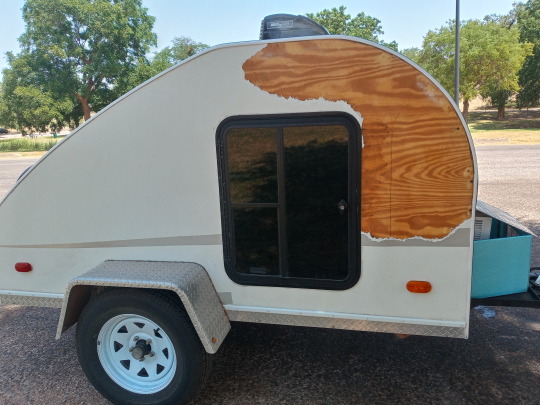
Seeing that I’ll be in the pacific northwest on part of this trip, this just will not do. After a few hours and some very unhelpful Lowe’s employees, I got what I needed to “fix” it. Good thing I’m crafty! I laid heavy duty RV roofing tape down, then used RTV silicone seal to make it water proof. This should hold the rest of the trip – but I’m kind of expecting the other side to blow away at some point. Fingers crossed!

Just like new. Right? RIGHT???
Now for the stuff that’s really important: PRAIRIE DOGS!
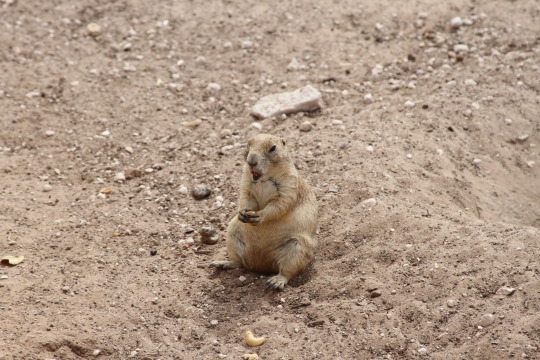


My first National Park stop was Aztec Ruins National Monument, not as much ruins as abandoned by the various tribes, like the Hopi and Zia, that lived that centuries ago. My favorite part was the great room in the largest ceremonial Kiva.

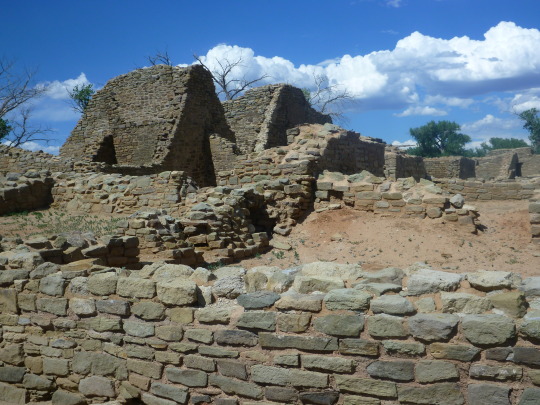
I earned my first Junior Ranger badge of the trip! I dedicate this badge to my friend and donor Jason-Fo, aka, Vacation Jason. Jason is one of the kindest, most authentic people I have ever known. We met in 2011 when we both served as chaperones on an environmental education trip taking honors students to the Hawaiian Islands on a 35 day course. We went back again, and have remained friends. Jason, thank you for your friendship and your support of my fundraiser! Mahalo nui loa. This badge is for you!

My next stop was two nights at Mesa Verde National Park. What a surprise it was! I didn’t know much about it, but wow, it’s beautiful for so much more than the many, many dwellings it’s known for. The story is very much the same as Aztec Ruins; the various tribes that lived here for so long eventually leftover time to reach ‘greener pastures’, since they sustenance and economy was driven by agriculture.
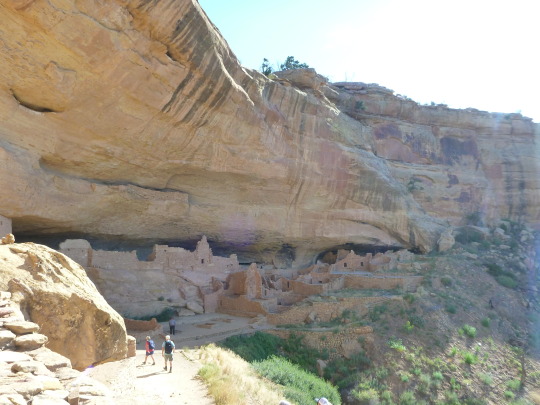
I did a ranger lead tour of Long House, the second largest dwelling in the park. There are 150 rooms here, and many families lived in an impressively run community. Rooms stacked on top of rooms, we used ladders to ascent upwards just like they did hundreds of years ago. After moving on, different tribes ended up in Arizona, New Mexico, and Texas.

I was lucky that at the end of my second day there, members of the Ute tribe performed drums, dancing, and storytelling at their ancestral lands of the park. I also ruined some people’s day by telling them they couldn’t gather firewood in the park. The guy said, “It’s not for a campfire, it’s for, like, a burning man.” I will be honest, I short circuited there for a moment, because although I’ve heard a lot of weird things working and visiting the parks, that was a new one. I told him that it didn’t really matter what it’s for, you can’t take wood, plants, flowers, anything from a National Park, everything is protected. Luckily, he didn’t seem very sharp so he didn’t argue, and when I asked them to put the sticks back in the wood, they dropped them, and looked supremely bewildered as they walked away. Score one for ya girl.
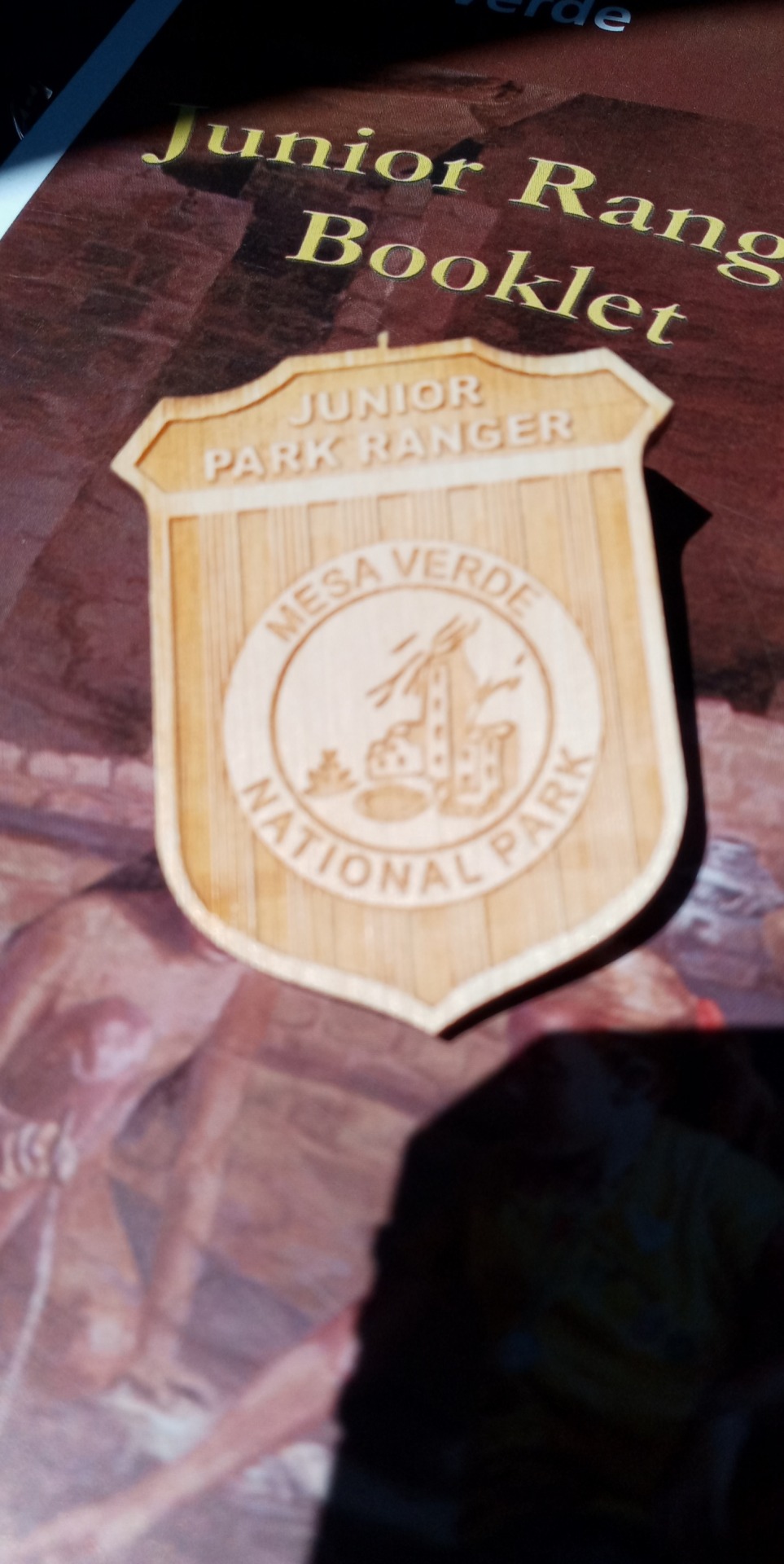
I earned my second Junior Ranger Badge of the trip here. I dedicate this one to my dearest Shelby, who I saw crawl out of the birth canal at zero years old (well, not really, but don’t tell Shelby that). Thank you for being the first person (*that I’m NOT married to) to donate to this fundraiser. You are a great person to have in my life because you are driven, strong, honest, and intelligent. Your love for life is something to aspire to. You are far better quality than this terribly unfocused picture!
I will update as soon as I have service/wifi again. I have no idea how often that will be! Such is life on the road.
Haylan
#road trip for a cause#road trip#ehlers danlos#ehlers danlos awareness#ehlers danlos society#ehlers danlos syndrome#hypermobility spectrum disorder#HSD#hEDS#chronic illness#mesa verde#mesa verde national park#national park road trip#national park#aztec ruins#aztec ruins national monument#camper#teardrop#camper trouble
4 notes
·
View notes
Text
Two Hundred Fifty Things an Architect Should Know
by Michael Sorkin
1. The feel of cool marble under bare feet. 2. How to live in a small room with five strangers for six months. 3. With the same strangers in a lifeboat for one week. 4. The modulus of rupture. 5. The distance a shout carries in the city. 6. The distance of a whisper. 7. Everything possible about Hatshepsut’s temple (try not to see it as ‘modernist’ avant la lettre).

The Temple of Hatshepsut
8. The number of people with rent subsidies in New York City. 9. In your town (include the rich). 10. The flowering season for azaleas. 11. The insulating properties of glass. 12. The history of its production and use. 13. And of its meaning. 14. How to lay bricks. 15. What Victor Hugo really meant by ‘this will kill that.’ 16. The rate at which the seas are rising. 17. Building information modeling (BIM). 18. How to unclog a Rapidograph. 19. The Gini coefficient. 20. A comfortable tread-to-riser ratio for a six-year-old. 21. In a wheelchair. 22. The energy embodied in aluminum. 23. How to turn a corner. 24. How to design a corner. 25. How to sit in a corner. 26. How Antoni Gaudí modeled the Sagrada Família and calculated its structure. 27. The proportioning system for the Villa Rotonda. 28. The rate at which that carpet you specified off-gasses. 29. The relevant sections of the Code of Hammurabi. 30. The migratory patterns of warblers and other seasonal travellers. 31. The basics of mud construction. 32. The direction of prevailing winds. 33. Hydrology is destiny. 34. Jane Jacobs in and out. 35. Something about feng shui. 36. Something about Vastu Shilpa. 37. Elementary ergonomics. 38. The color wheel. 39. What the client wants. 40. What the client thinks it wants. 41. What the client needs. 42. What the client can afford. 43. What the planet can afford. 44. The theoretical bases for modernity and a great deal about its factions and inflections. 45. What post-Fordism means for the mode of production of building. 46. Another language. 47. What the brick really wants. 48. The difference between Winchester Cathedral and a bicycle shed. 49. What went wrong in Fatehpur Sikri. 50. What went wrong in Pruitt-Igoe. 51. What went wrong with the Tacoma Narrows Bridge. 52. Where the CCTV cameras are. 53. Why Mies really left Germany. 54. How people lived in Çatal Hüyük. 55. The structural properties of tufa. 56. How to calculate the dimensions of brise-soleil. 57. The kilowatt costs of photovoltaic cells. 58. Vitruvius. 59. Walter Benjamin. 60. Marshall Berman. 61. The secrets of the success of Robert Moses. 62. How the dome on the Duomo in Florence was built.

Duomo in Florence
63. The reciprocal influences of Chinese and Japanese building. 64. The cycle of the Ise Shrine. 65. Entasis. 66. The history of Soweto. 67. What it’s like to walk down the Ramblas. 68. Back-up. 69. The proper proportions of a gin martini. 70. Shear and moment. 71. Shakespeare, et cetera. 72. How the crow flies. 73. The difference between a ghetto and a neighborhood. 74. How the pyramids were built. 75. Why. 76. The pleasures of the suburbs. 77. The horrors. 78. The quality of light passing through ice. 79. The meaninglessness of borders. 80. The reasons for their tenacity. 81. The creativity of the ecotone. 82. The need for freaks. 83. Accidents must happen. 84. It is possible to begin designing anywhere. 85. The smell of concrete after rain. 86. The angle of the sun at the equinox. 87. How to ride a bicycle. 88. The depth of the aquifer beneath you. 89. The slope of a handicapped ramp. 90. The wages of construction workers. 91. Perspective by hand. 92. Sentence structure. 93. The pleasure of a spritz at sunset at a table by the Grand Canal. 94. The thrill of the ride. 95. Where materials come from. 96. How to get lost. 97. The pattern of artificial light at night, seen from space. 98. What human differences are defensible in practice. 99. Creation is a patient search. 100. The debate between Otto Wagner and Camillo Sitte. 101. The reasons for the split between architecture and engineering. 102. Many ideas about what constitutes utopia. 103. The social and formal organization of the villages of the Dogon. 104. Brutalism, Bowellism, and the Baroque. 105. How to dérive. 106. Woodshop safety. 107. A great deal about the Gothic. 108. The architectural impact of colonialism on the cities of North Africa. 109. A distaste for imperialism. 110. The history of Beijing.
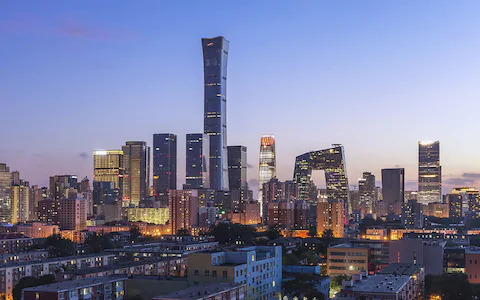
Beijing Skyline
111. Dutch domestic architecture in the 17th century. 112. Aristotle’s Politics. 113. His Poetics. 114. The basics of wattle and daub. 115. The origins of the balloon frame. 116. The rate at which copper acquires its patina. 117. The levels of particulates in the air of Tianjin. 118. The capacity of white pine trees to sequester carbon. 119. Where else to sink it. 120. The fire code. 121. The seismic code. 122. The health code. 123. The Romantics, throughout the arts and philosophy. 124. How to listen closely. 125. That there is a big danger in working in a single medium. The logjam you don’t even know you’re stuck in will be broken by a shift in representation. 126. The exquisite corpse. 127. Scissors, stone, paper. 128. Good Bordeaux. 129. Good beer. 130. How to escape a maze. 131. QWERTY. 132. Fear. 133. Finding your way around Prague, Fez, Shanghai, Johannesburg, Kyoto, Rio, Mexico, Solo, Benares, Bangkok, Leningrad, Isfahan. 134. The proper way to behave with interns. 135. Maya, Revit, Catia, whatever. 136. The history of big machines, including those that can fly. 137. How to calculate ecological footprints. 138. Three good lunch spots within walking distance. 139. The value of human life. 140. Who pays. 141. Who profits. 142. The Venturi effect. 143. How people pee. 144. What to refuse to do, even for the money. 145. The fine print in the contract. 146. A smattering of naval architecture. 147. The idea of too far. 148. The idea of too close. 149. Burial practices in a wide range of cultures. 150. The density needed to support a pharmacy. 151. The density needed to support a subway. 152. The effect of the design of your city on food miles for fresh produce. 153. Lewis Mumford and Patrick Geddes. 154. Capability Brown, André Le Nôtre, Frederick Law Olmsted, Muso Soseki, Ji Cheng, and Roberto Burle Marx. 155. Constructivism, in and out. 156. Sinan. 157. Squatter settlements via visits and conversations with residents. 158. The history and techniques of architectural representation across cultures. 159. Several other artistic media. 160. A bit of chemistry and physics. 161. Geodesics. 162. Geodetics. 163. Geomorphology. 164. Geography. 165. The Law of the Andes. 166. Cappadocia first-hand.
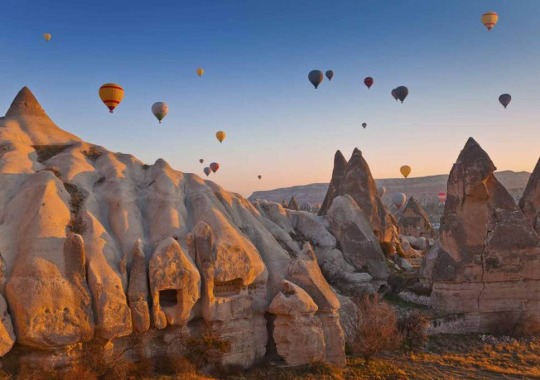
Cappadocia
167. The importance of the Amazon. 168. How to patch leaks. 169. What makes you happy. 170. The components of a comfortable environment for sleep. 171. The view from the Acropolis. 172. The way to Santa Fe. 173. The Seven Wonders of the Ancient World. 174. Where to eat in Brooklyn. 175. Half as much as a London cabbie. 176. The Nolli Plan. 177. The Cerdà Plan. 178. The Haussmann Plan. 179. Slope analysis. 180. Darkroom procedures and Photoshop. 181. Dawn breaking after a bender. 182. Styles of genealogy and taxonomy. 183. Betty Friedan. 184. Guy Debord. 185. Ant Farm. 186. Archigram. 187. Club Med. 188. Crepuscule in Dharamshala. 189. Solid geometry. 190. Strengths of materials (if only intuitively). 191. Ha Long Bay. 192. What’s been accomplished in Medellín. 193. In Rio. 194. In Calcutta. 195. In Curitiba. 196. In Mumbai. 197. Who practices? (It is your duty to secure this space for all who want to.) 198. Why you think architecture does any good. 199. The depreciation cycle. 200. What rusts. 201. Good model-making techniques in wood and cardboard. 202. How to play a musical instrument. 203. Which way the wind blows. 204. The acoustical properties of trees and shrubs. 205. How to guard a house from floods. 206. The connection between the Suprematists and Zaha. 207. The connection between Oscar Niemeyer and Zaha. 208. Where north (or south) is. 209. How to give directions, efficiently and courteously. 210. Stadtluft macht frei. 211. Underneath the pavement the beach. 212. Underneath the beach the pavement. 213. The germ theory of disease. 214. The importance of vitamin D. 215. How close is too close. 216. The capacity of a bioswale to recharge the aquifer. 217. The draught of ferries. 218. Bicycle safety and etiquette. 219. The difference between gabions and riprap. 220. The acoustic performance of Boston Symphony Hall.

Boston Symphony Hall
221. How to open the window. 222. The diameter of the earth. 223. The number of gallons of water used in a shower. 224. The distance at which you can recognize faces. 225. How and when to bribe public officials (for the greater good). 226. Concrete finishes. 227. Brick bonds. 228. The Housing Question by Friedrich Engels. 229. The prismatic charms of Greek island towns. 230. The energy potential of the wind. 231. The cooling potential of the wind, including the use of chimneys and the stack effect. 232. Paestum. 233. Straw-bale building technology. 234. Rachel Carson. 235. Freud. 236. The excellence of Michel de Klerk. 237. Of Alvar Aalto. 238. Of Lina Bo Bardi. 239. The non-pharmacological components of a good club. 240. Mesa Verde National Park. 241. Chichen Itza. 242. Your neighbors. 243. The dimensions and proper orientation of sports fields. 244. The remediation capacity of wetlands. 245. The capacity of wetlands to attenuate storm surges. 246. How to cut a truly elegant section. 247. The depths of desire. 248. The heights of folly. 249. Low tide. 250. The Golden and other ratios.
940 notes
·
View notes
Video
vimeo
One of my favorite filmmakers featuring the night sky from places where humans were likely watching it some thousands of years ago. Original caption: "Scattered across the United States, from the Southwest, all the way to Hawai'i, ancient astronomy petroglyphs and archaeoastronomy structures sit weathering in the landscape.
Carved and built by diverse group of tribes, from Native Hawaiians, to the Paiutes of Bishop, California, and the Ancestral Puebloans of the Southwest, these petroglyphs and structures reflect the long standing interest in Ancient Astronomy which grew stronger as many of the tribes went from the Hunter Gatherer to the Agrarian societal orders. From references to the Sun carved in the rock, and interest in using the Sun to predict seasons (entire buildings built to essentially serve as sundials and calendars, a critical element in the farming communities) to those of 13 moons (lunar annual calendar), to carvings of stars and constellations, interest in celestial bodies is ever present across the indigenous communities of the United States. This video journeys to National Park Service sites from California, Arizona, Colorado, and New Mexico, many of whom give us a glimpse of how the night sky may have appeared to the ancient inhabitants of those lands. Many of these places were named International Dark-Sky Parks by the International Dark-Sky Association, partly due to their remote locations, and partly due to the hard work by the National Park Service to preserve the quality of the night skies through lighting retrofits and educational programs about the night sky heritage and astronomy. The video also features 2018’s epic Lunar Eclipse, a.k.a. “Blood Moon,” seen at 1:03. This video was filmed as part of SKYGLOW (skyglowproject.com), an ongoing crowdfunded quest to explore the effects and dangers of urban light pollution in contrast with some of the most incredible dark sky areas in North America. This project is being produced in collaboration with International Dark-Sky Association (darksky.org), a non-profit fighting for the preservation of night skies around the globe. ------- Locations :Wupatki National Monument, Arizona Chaco Culture National Historical Park, New Mexico Bandelier National Monument, New Mexico Mesa Verde National Park, ColoradoB ishop, California
#petroglyph#mesa verde#night sky#dark sky#timelapse#video#vimeo#dark sky park#the universe#the real universe
72 notes
·
View notes
Text
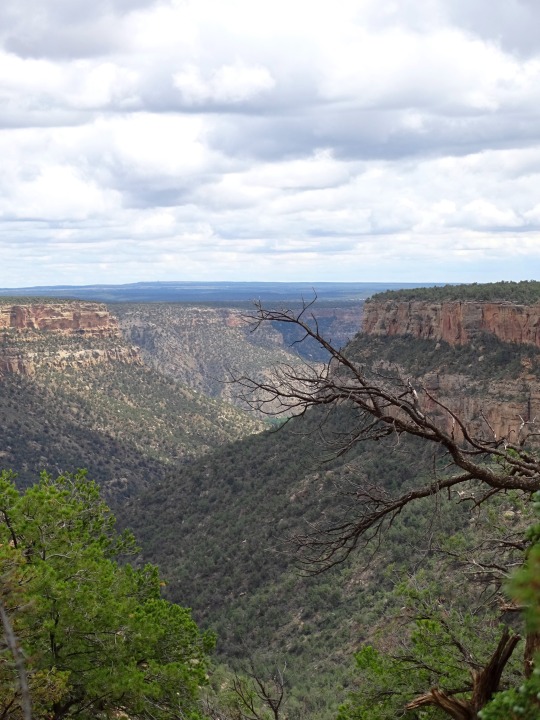
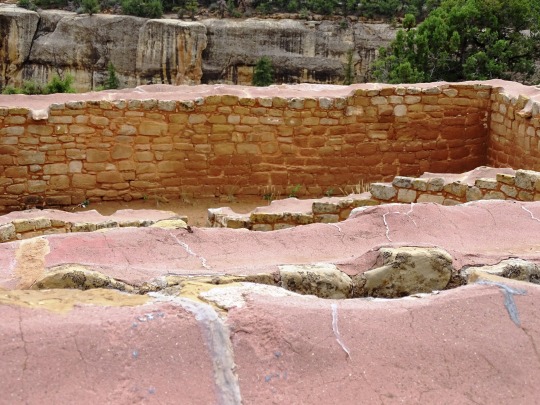
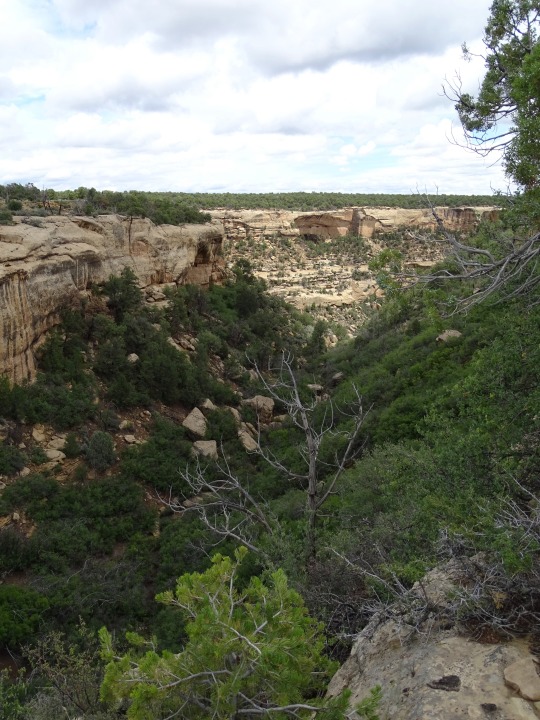
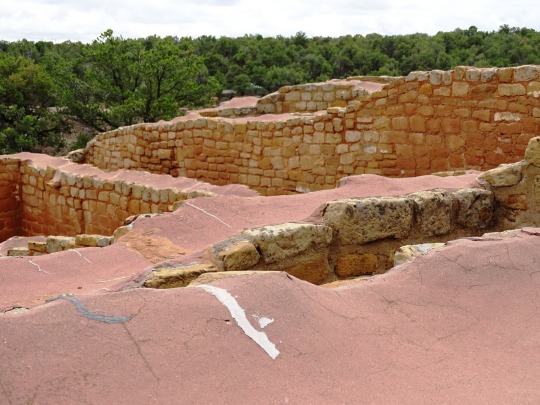


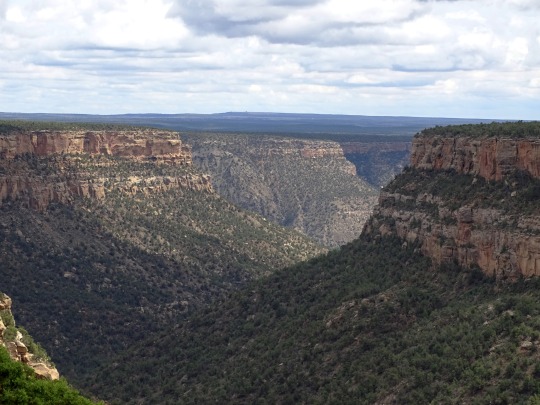
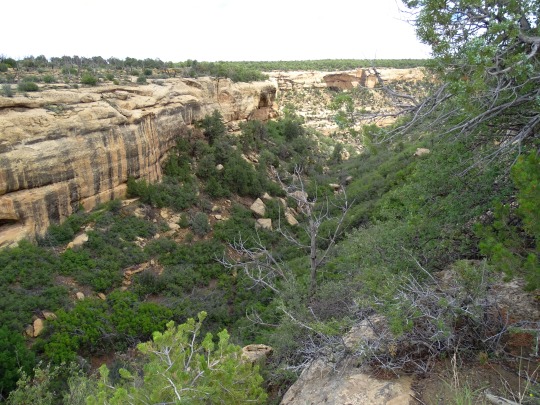

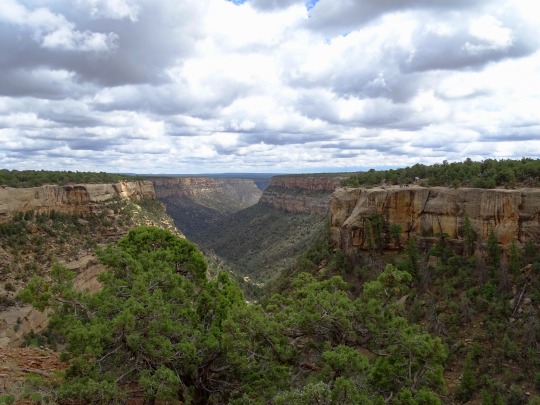
Mesa Verde National Park (No. 25)
Mesa Verde National Park, established in 1906, features some of the most well-preserved Ancestral Puebloan sites in the Southwest. More than 22,000 people may have lived on and around Mesa Verde at the beginning of the 1200s. But by the beginning of the 1300s, the area was depopulated, likely as a result of a prolonged drought or other social pressures. The inhabitants largely resettled in Arizona and the Rio Grande Valley of New Mexico, where their descendants live today as the Pueblo and Hopi people. (The park’s former inhabitants were once called the Anasazi, though the term – which is commonly cited as meaning “ancient enemy” in the Diné language – is considered derogatory by Pueblo people and has fallen out of use).
Mesa Verde’s crown jewels are its cliff dwellings, sprawling structures built in alcoves beneath the mesa tops, with likely uses including habitation, food storage, ceremony and ritual. More than 600 cliff dwellings are scattered throughout the park, though they represent just a fraction of the more than 5,000 known archeological sites within park boundaries.
Amid this archaeological treasure trove, Sun Temple stands out.
Source
#Sagebrush lizard#Mesa Verde National Park#Sun Temple#Ancestral Puebloans#Montezuma County#Native American history#Mountain West Region#UNESCO World Heritage Site#travel#original photography#vacation#tourist attraction#landmark#architecture#ruins#summer 2022#USA#archaeology#nature#flora#cliff#wildlfie#fauna#reptile#countryside
10 notes
·
View notes
Photo

Ceramic vessel, Ancestral Puebloan, West-central New Mexico, USA, ca. 1100 - 1250
Saint Louis Art Museum
Provenance: museum purchase
10 1/2 x 14 in. (26.7 x 35.6 cm)
The Ancestral Puebloans were an ancient Native American culture that spanned the present-day Four Corners region of the United States, comprising southeastern Utah, northeastern Arizona, northwestern New Mexico, and southwestern Colorado. Pueblo, which means "village" in Spanish, was a term originating with the Spanish colonialists who used it to refer to the people's particular style of dwelling which was only accessible by rope or through rock climbing. In their day, these ancient towns and cities were usually multistoried and multipurposed buildings that surrounded open plazas and viewsheds. Three UNESCO World Heritage Sites located in the United States are credited to the Pueblos: Mesa Verde National Park, Chaco Culture National Historical Park and Taos Pueblo.
[text source: @wikipedia]
#12th century#ceramic#art#ancestral puebloan#museum#public domain#pottery#global art history#native american#art history
9 notes
·
View notes
